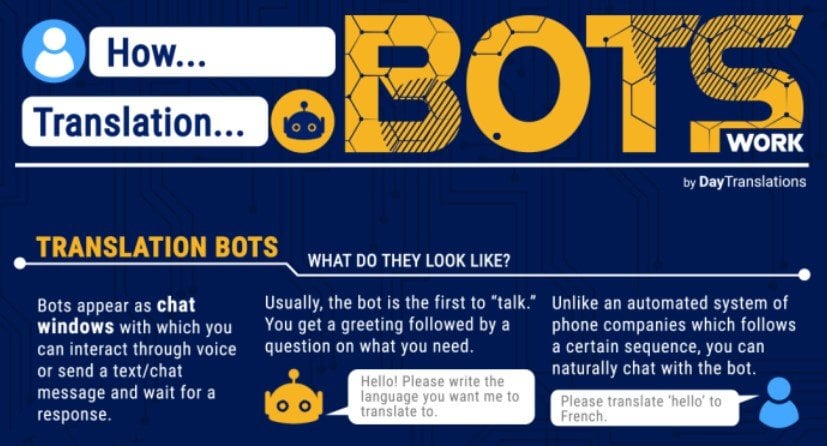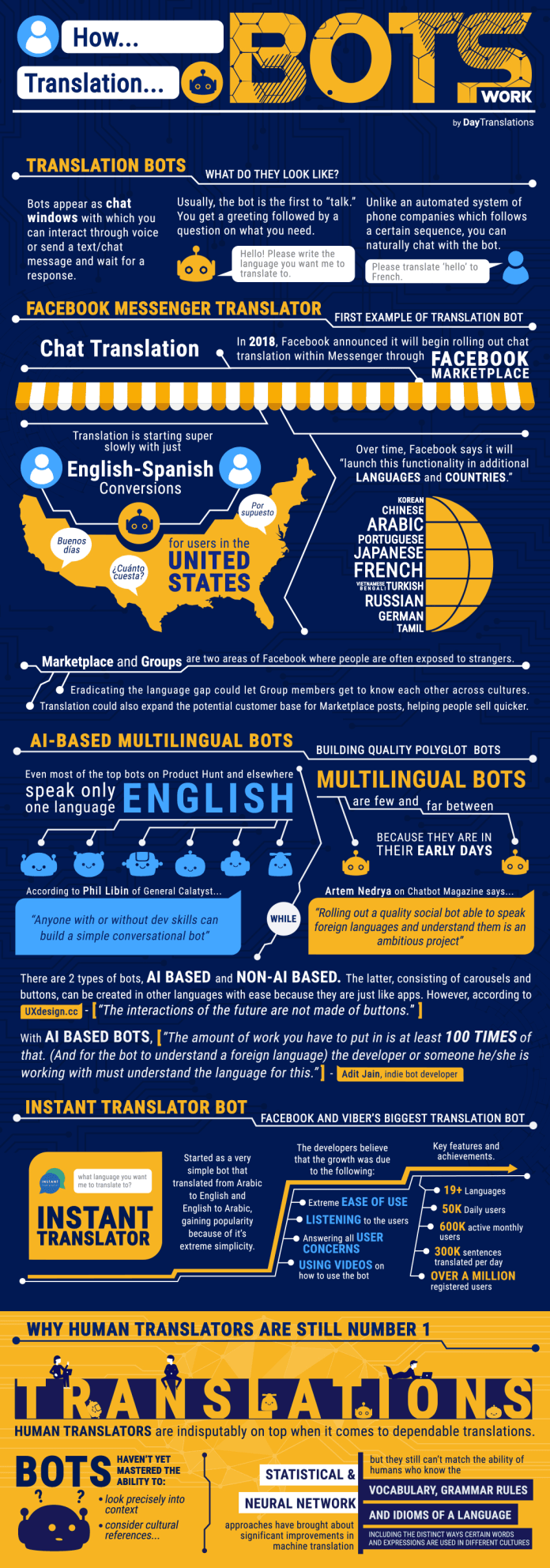It’s anticipated that 80% of all businesses will use chatbots by 2020. They are now available on almost every platform, and are more intuitive than ever. Even though some of the biggest chatbots, like Siri and Alexa, are relatively new, this technology actually dates back to the mid 20th century.
In 1950, Alan Touring theorized that an intelligent machine would be indistinguishable from a human in a text-only conversation. In 1966, MIT Professor, Joseph Weizenbaum invented Eliza, the world’s first chatterbot, who, using only 200 lines of code, imitated the language of a therapist.
[REITs]Q3 hedge fund letters, conference, scoops etc
Chatbots have come a long way since then. However, still in its infancy is the translation bot. For a translation bot to be 100% accurate, it must identify innuendos, syntax, grammar, and inflection.
Translation bots are not quite there yet. But they are ever improving. This simple Day Translation’s infographic explains where translation bots started, and where they are today.
How do translation bots work?
Translation bots are not complete translation services or platforms themselves. They are more of an interactive interface for a translation service. They only connect a user to a translation service through an AI-powered text or voice-based interface.
There are non-AI translation bots, but they are most likely headed for obsolescence. They are characterized by the use of carousels and buttons, hence not as easy and intuitive to use as AI-powered ones. Using them is mostly a procedural experience, so they don’t create a natural interaction with the system.
- Translation bots simply obtain the information needed to be fed into the actual machine translation platform. Once the translation is generated, the bots then present the output to the user. In other words, the bot refines the information from the user so it can be easily understood by the machine translator, and delivers the resulting translation to the user in good text or audio form.
- Bots relegate the actual job of converting messages from one language to another to established machine translation platforms such as Google Translate, Babelfish, Skype Translator, or Facebook Translator. That’s why you often see Translator bots as add-ons to apps or web-based services. Instant Translator, for example, is not a standalone app but something you add to Facebook or Viber.
- There are also bots that don’t have to be installed as an add-on but added as contacts in a messaging service. For example, you can add Translate.Ru as a contact on Skype (through “join.skype.com/bot/e0255810-48d1-42da-b657-8388c4eca5ae.”) or Telegram (through “t.me/TranslateRuBot”). Once you have them on your contact list, you can send messages to them to request for translations.






